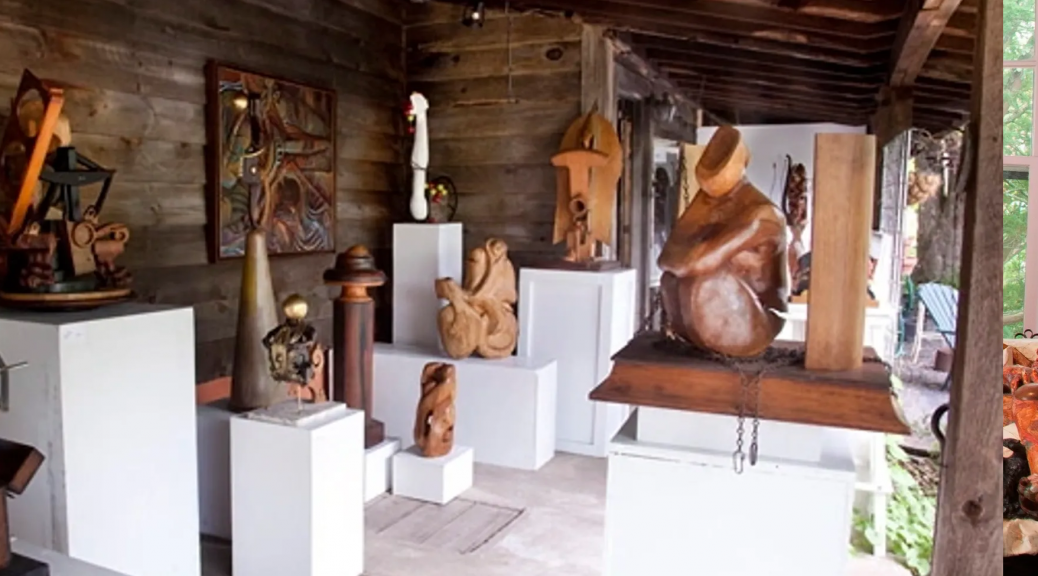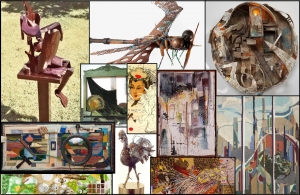TheArtGuide.com presents the work and words of one of our top Feature Artist, Fay Wood. Fay has studied art and sculpture for over sixty years and has shown her works across the United States as well as Italy, Germany and England. This year Fay’s art will be exhibited at a corporate library and her paintings were selected for print by a Canadian manufacturer clothing line as well as featured in the film “Audrey.” We feel that it’s a great privilege and honor to represent Fay at Art Guide and look forward to sharing her future works with our many viewers.

‘The Use of Found Objects’ by Fay Wood
“Found Objects” have a certain aesthetic value due to their textural and color qualities, social meaning or history that add dimension to the work in which it’s used. By the late 20th century, “found objects” in the art world took on a broader meaning. Its use in mixed media brought change to the making and viewing of art; particularly sculptural. Since the end of World War I, these creations have enthralled, upset, confused, and delighted viewers causing strong public reaction. Each design article was carefully planned to develop a composition that was made from a variety of materials, the artist chose, but the plan was primarily for their inherent reaction to the viewing audience and to gain artistic notoriety. In the early 1900’s several schools of thought evolved around the more notable practitioners of this technique including Duchamp, the Dadas, Picasso, Jasper Johns, the Arte Povera movement.

The use of ‘found objects’ is not a new idea. There is evidence that prehistoric people were attracted to various items and used them for decorative purpose. Finding unique objects that attract imaginative minds has always been an enjoyable part of creating. It was the French in the early 20th century that added the name “Objet Trouve” when this technique was considered subversive, ultra-modern, and in direct opposite of past “academic” techniques.
My own first meeting with Found Object sculpture was seeing a cutting edge exhibition at the Museum of Fine Arts in Boston. I was in my first year at the Massachusetts College of Art, a budding young artist steeped in tradition, who was not Impressed with the makings of academic study! Seven years later, in 1966, while driving along the San Francisco bay, I saw an amazing sight! Along the shore were a collection of large, absolutely spectacular sculptures made by a group of sculptors who scavenged the beach for materials. Driftwood and beach found items were transformed into life-size, dynamic works! I have never forgotten them. From that time, I have been experimenting with a variety of materials to add at hand, carved works to create sculpture, collage and tapestry.
“Woman on a Pedestal” Found Wood (top left)
“Woman on a Pedestal” made of cherry wood was one of my first attempts in using this technique and I continue to do variations of the theme to this day. I first began carving Cherry wood through the encouragement of sculptor Jasmine Saunders, from Sheffield, Massachusetts. In her studio I attended a life drawing group and began to add objects to my works for texture, height and enhanced narrative.
See my many works at www.faywoodstudio, Art Guide Feature Listing or contact me at the Saugerties, NY studio, [email protected].
“Chanticleer” Winner of the Proskauer Prize for non-traditional sculpture – National Sculpture Society Annual award exhibition



